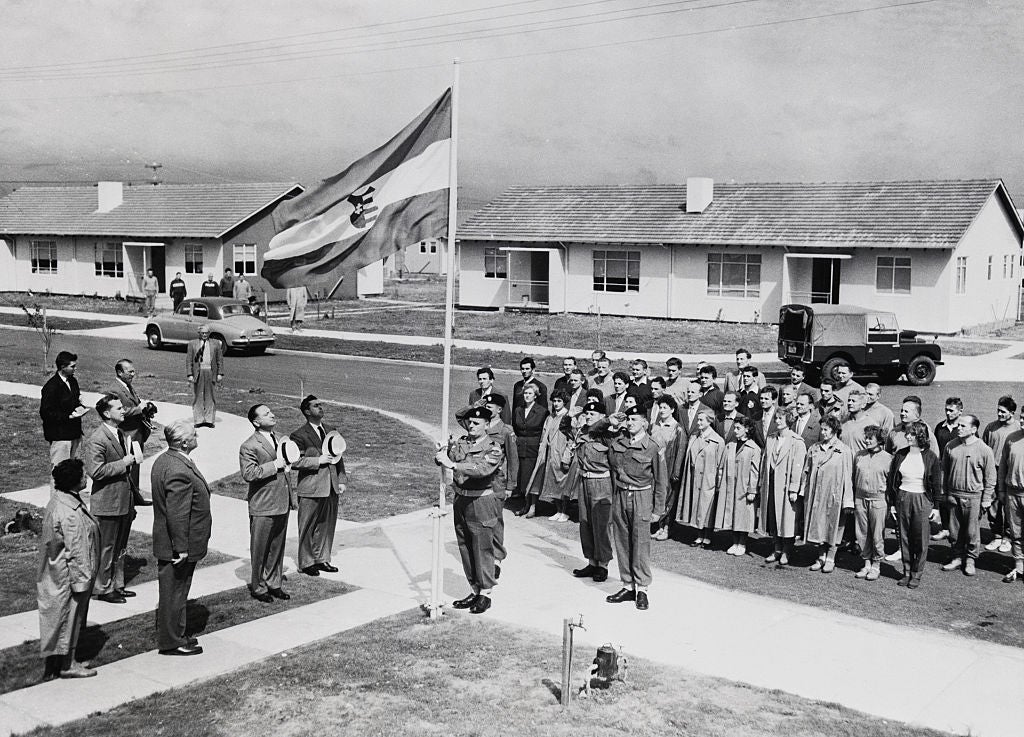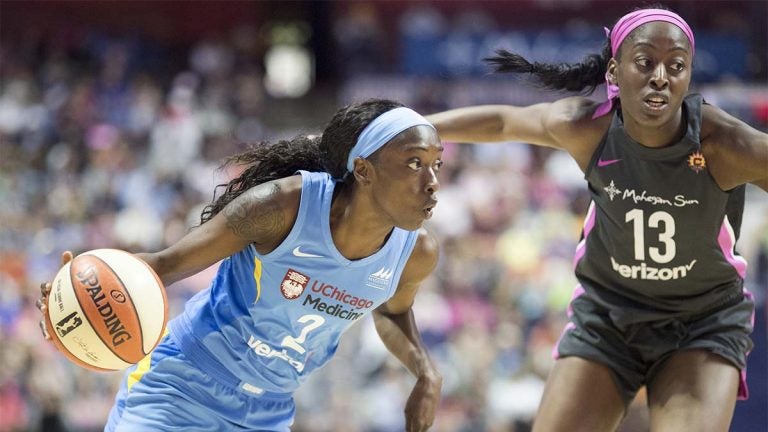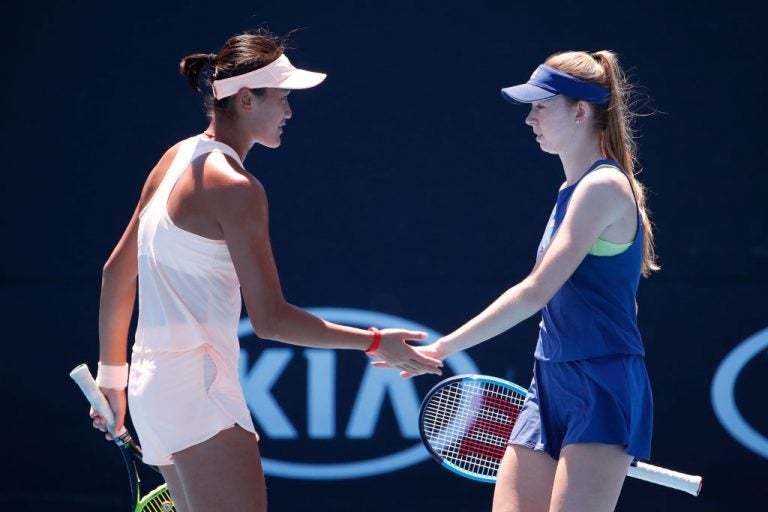Athletes Deserve Better in Retirement: Inspiration from Socialist Hungary
Why this matters
Major American pro sport does not tend to prioritize caring for and supporting its athletes off the field or in retirement. For the U.S. to improve, it could look to an unlikely source: Cold War-era socialist Hungary.
In an interview in 2015, an Olympian told me that he considered his years as an athlete to be the “beautiful years” of his life, providing the foundation for a career in sports administration and marketing in retirement.
He, like many other athletes, detailed how athletes received better-than-average salaries throughout their international sport careers in addition to healthcare coverage, assistance for developing their professions after retiring from sport, and more. He concluded the interview by explaining, “Sport could protect me, sport could give me a nice target, sport could [help me] develop myself. So I have to thank, in general, to sport for almost everything.”
Where did these athletes live, you might wonder? Not in the United States or in Western Europe. But in Hungary, during its era of socialist rule from 1957 to 1989 behind the so-called Iron Curtain.
Despite the common belief that American capitalist sport is unilaterally beneficial for athletes, athlete exploitation was and is par for the course in the U.S.
Most American athletes are exploited to various degrees throughout their careers and don’t make enough money to support themselves while they train and compete, much less after they retire. From the horrific details of CTE-induced physical and mental health challenges in football and hockey to coach- and media-induced eating disorders in gymnastics, swimming and other sports - along with the enormous health issues that many athletes endure when they retire - we constantly fail to provide elite athletes the care and support they need when they retire from the sports that they gave so much to. In a recent study of 500 athletes globally, 60% of the athletes reported not feeling that they were financially stable.
Related: What American Youth Sports Can Learn from the World
We can and need to provide better care for athletes, including in retirement. Looking around the world for historical alternatives to our capitalist sport system provides us with lessons for how we can do better. Though imperfect, Hungary is one such example, as it developed one of the most successful sport structures and communities of all time not only in terms of victories but in athlete care also.
There is no denying the brutal nature of some aspects of the communist state from 1948 to 1956. When the Communist Party took over in 1948, it quickly nationalized sport clubs along with other industries, named top Communist Party members to administrative positions in sport, made those administrators answerable to top governmental leaders, and surveilled athletes heavily. Sport officials thus governed the sport community the way the government did: They favored the very top athletes and allotted prized privileges like the ability to travel and smuggle goods or to have access to living quarters. By maintaining an unclear pathway to receiving state support, the patriarchal Hungarian government did not offer state support equitably. In keeping with their authoritarian stylings, officials also sometimes monitored and swiftly punished athletes.
The worst incident occurred during the period of the Stalinist show trials across the Eastern Bloc: Football player Sándor Szűcs was set up and caught by the Ministry of Interior for trying to defect to the West for a professional contract and love. The objections of his teammates and even a promise from the Minister of Defense to intervene did not help, and Szűcs was executed for his crimes in 1951. Simultaneous to the era of communist repression from 1948 to 1956, Hungarian athletes achieved the most success on the field in the nation’s history. The national Magical Magyars soccer team dominated global soccer by losing only one match from 1951 to early 1956, and the team consistently finished in the top four in Olympic medal counts.
Sport success that is narrowly defined by victories and records can veil the harmful experiences that athletes might have endured. But the case of socialist Hungary that emerged after the 1956 Hungarian Revolution until 1989 is instructive precisely for the evolution of the socialist sport system in offering benefits to athletes.
The 1956 Hungarian Revolution and its aftermath sparked massive changes, some of which developed the sport environment that athletes recalled positively to me.
The crisis sparked by the Revolution and compounded by the mass defections – whereby more than 300 athletes joined the 200,000 Hungarians who fled west, including one-third of the Olympic team who defected with U.S. assistance – left the sport community and top officials reeling. Sport officials and state leaders desperately needed athletes’ help to regain political legitimacy domestically and show the international sport community that it was still dedicated to “apolitical peace through global sport” after the bloody revolution. They thus saw the need to modify their treatment of athletes to prevent more from defecting and to gain their willing cooperation. Athletes’ defections and sport officials’ desire to gain their help contributed to the socialist sport system that cared for its athletes into retirement.
The socialist state began assisting athletes’ retirement conditions long before they retired.
First, Hungary ensured that athletes competitive enough to compete internationally were paid for their athletic labor. Unless they competed for the Army (Honvéd) or Police (Dózsa) teams that required them to do additional military or police service, once athletes reached a certain competitive level they got paid full-time to focus on training and competing. Unlike nations like the U.S. that maintained discriminatory ideas of amateurism, the Hungarian socialist state did not force athletes to play for the love of the game and not for money. Rather, it provided athletes with a sportállás, or sport position, which was a job on paper only. For example, basketball player Anna Molnár received a full-time salary for “working” as a chemist’s assistant in the 1980s. Rather than working in this position, she trained and competed.
Four-time Olympic water polo player István Szívós Jr. laid out one of his sport positions to me. His situation was slightly different than Molnár’s, but it had clear similarities:
“They sent us somewhere, and so we did not have to go to work. Or in the morning you went, and you completed your thing. When I began to play at Fradi [Ferencváros Torna Club], I was an inspector at a dairy factory, which meant that everyday in the morning from 8-10 I went in. And at 10 I left. But to the extent that I was an “inspector”….I ate breakfast, I read the news.”
Whereas during the communist era prior to 1957, the state made only fake, paper jobs available to the very top athletes. During the socialist period, the system expanded so non-Olympic athletes were also paid full-time for their athletic labor through paper jobs. Though pay was relatively modest, it is enormously significant that Hungarian elite athletes did not experience the levels of poverty and economic discrimination endured by athletes such as those in the U.S. at that time. The state’s provision of the paper jobs enabled athletes to focus on their training and any future career opportunities they wanted to pursue rather than have to struggle with the mental and physical strain of a day job on top of training and planning for the future.
Comparatively, American athletes who lacked family wealth endured enormous barriers to continuing their careers after college due to capitalist implementation of amateurism. The NCAA, the U.S. Olympic Committee, and the Amateur Athletic Union (AAU) maintained an amateur ideal that prevented athletes from legally making money from their athletic labor to support themselves. Athletes sought creative ways around amateurism that largely still left them exploited. Hungarian athlete-defector László Tábori, for example, struggled to balance a full-time job and train at an elite-enough level to keep competing internationally in the U.S. Despite being the third man in the world to run a sub-4-minute mile, before retiring out of frustration, Tábori lived with 12 other athletes in a three-bedroom apartment near Los Angeles.
The Hungarian socialist state also provided athletes with the best medical care that it could offer. And despite shortages, athletes had access to the best possible healthcare even compared with healthcare received by other citizens who were covered by the country’s universal system. For example, another Hungarian pentathlete named Gábor Benedek ended up defecting to West Germany in 1969 because the socialist state’s medical infrastructure could not offer his daughter the specialized healthcare she needed. However, the state’s ability to provide every citizen – including athletes who pushed their bodies to the max while training – with healthcare meant that athletes did not have to beg for donations to cover their need for proper medical assistance like many athletes must in the U.S.
Crucially, the socialist state also helped athletes establish stable professional pathways for when they retired and transitioned to post-sport life. Though the state clearly wanted to project athletes as models for the rest of the population, we cannot deny that the state did genuinely help athletes develop their post-sport careers. István Buda, president of the National Sport and Physical Education Office and Hungarian Olympic Committee from 1978 to 1985, explained to me the importance of helping and convincing athletes to think about preparing for their lives after sport. He did not want athletes to rely on the National Sport and Physical Education Office’s help for life, and he recalled the difficulties of persuading them to plan otherwise.
Related: Overseas Play a Necessary Part of Life for WNBA Players
In some cases, help from the state and sport officials like Buda meant helping athletes get admitted to universities and colleges. Hungarian athletes under socialism spent an enormous amount of time training and competing, with two-a-day practices the norm plus additional time for competitions, travel, crossing borders, and other related tasks. Though the socialist state considered its athletes’ labor as legitimate labor and thus employed them full-time, they were international-level athletes whose schedules were similar to current NCAA athletes in the U.S. Helping athletes gain admission to universities likely helped to account for the time that they spent on their athletic labors that others spent studying.
Other athletes – with sport officials’ approval (not unlike the NCAA’s transfer portal) – transferred to club teams associated with a professional school so that they could focus on their education as much as possible. Szívós Jr. transferred from the prominent sport club Vasas Sport Club in the late 1960s to Orvosegyetem Sport Club (OSC), which, despite carrying less prestige, was associated with the dental school at Semmelweis University, allowing him to focus on his professional career.
Many Hungarian athletes also transitioned to become coaches upon retirement. There was significant propaganda value for the state in portraying former successful athletes as helping train the next generation of Hungarian athletes. Still, athletes needed to attend university and receive a degree from the prestigious Physical Education University before they could gain a coaching position.
Many retired athletes-turned-coaches moreover aspired to obtain top leadership positions in sport. Pentathlete Ferenc Török is one example. On the way to winning two gold medals at the 1964 and 1968 Summer Olympics, he received his coaching diploma in 1966. Török became the head coach of the national pentathlon team in 1976 and coached the Olympic pentathlon team to individual and team gold medals at the 1988 Seoul Olympic Games.
Further, Hungarian socialist sport officials helped athletes establish post-sport careers in commercial ways by helping some obtain small business permits after the state implemented serious economic reforms in 1968. For example, despite never competing for the Olympic team, fencer Gábor Erdős received a small business permit in 1971 while he was an active fencer from the 1960s to the 1980s. He used the permit to open a clothing store that he ran with his wife. Two-time Olympic silver medal canoer Tamás Wichmann received a permit in 1987 to open and run a pub, which remained open until just a few years ago. Wichmann’s and Török’s histories illustrate how the socialist state’s support helped them long after socialism ended in 1989.
The socialist state and sport officials intentionally provided athletes with myriad modes of support to help them prepare for retirement during their sport careers and after. Through fake, paper jobs, healthcare, and access to education and white-collar careers, as well as coaching pathways and commercial ventures, Hungarian athletes at the elite level could and did receive significant and well-deserved assistance, which in turn helped them establish financial security prior to and in retirement. These are the elements of the socialist sport system that we should take inspiration from.
From 1957 to 1989, the socialist state responded to athletes’ dissatisfaction with communism by adjusting their sport system to encourage athletes to stay and not defect across the Iron Curtain to the West. This contrasted starkly with the poverty that athletes in the U.S. endured during the 1950s and 1960s. Importantly, these are modes of support that athletes in America continue to advocate for – and remain largely unsuccessful in obtaining.
Hungarian athletes were not spoiled, entitled citizens who chose to focus only on their sport endeavors. Similar to U.S. athletes then and today, they were athletic laborers who pushed themselves daily in a sporting environment where their state, sport officials, and teams capitalized off their bodies and victories. That the Hungarian socialist state paid them for their labor and healthcare and assisted them in retirement is the bare minimum of what they and athletes everywhere deserve.
Monthly Issue
The Athlete's Journey
If you are what you repeatedly do, what happens when you stop doing it?
The athlete's journey outside of competition is not often covered in media, nor considered all that much by fans. It can, however, be core to athletes’ lived experiences, impacting decisions on where to play, which business opportunities to take, how to take care of their physical and mental health and more.




